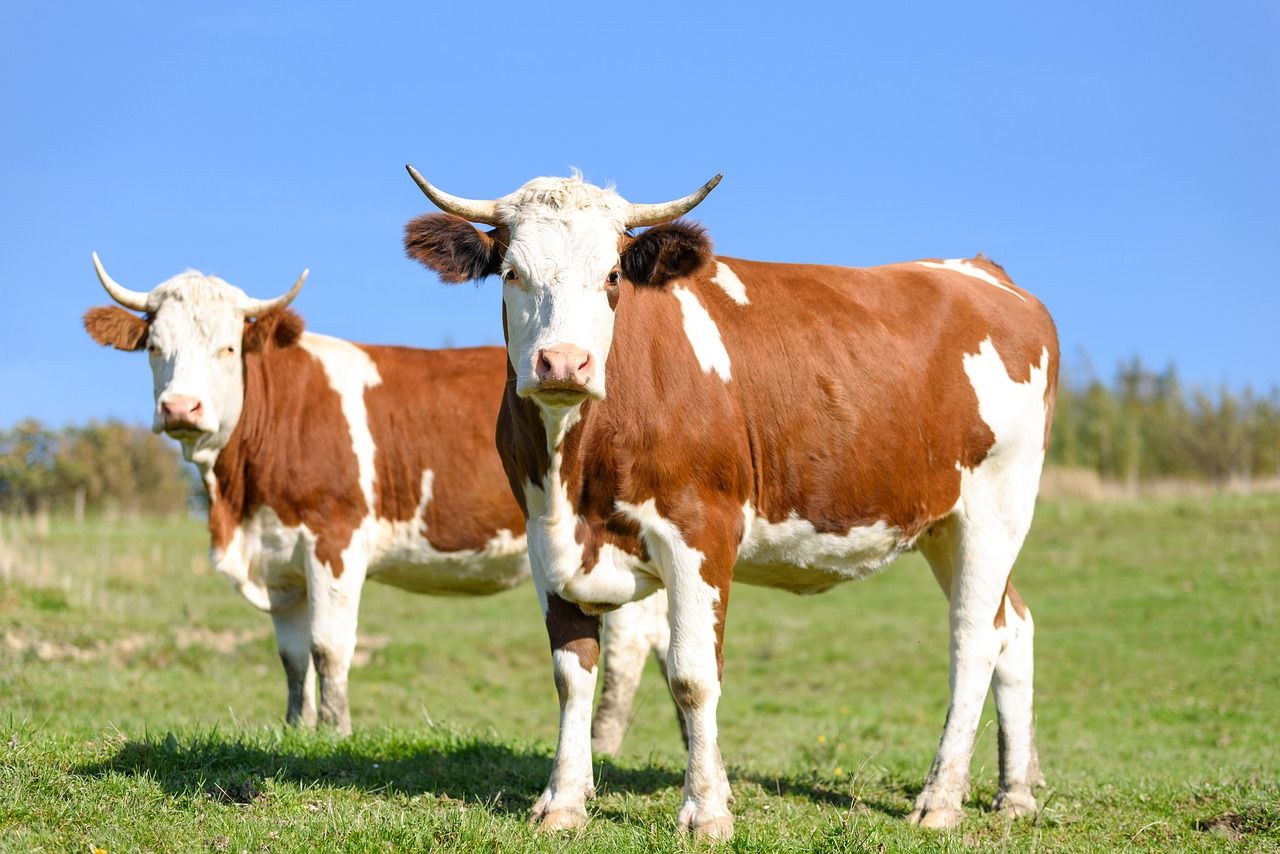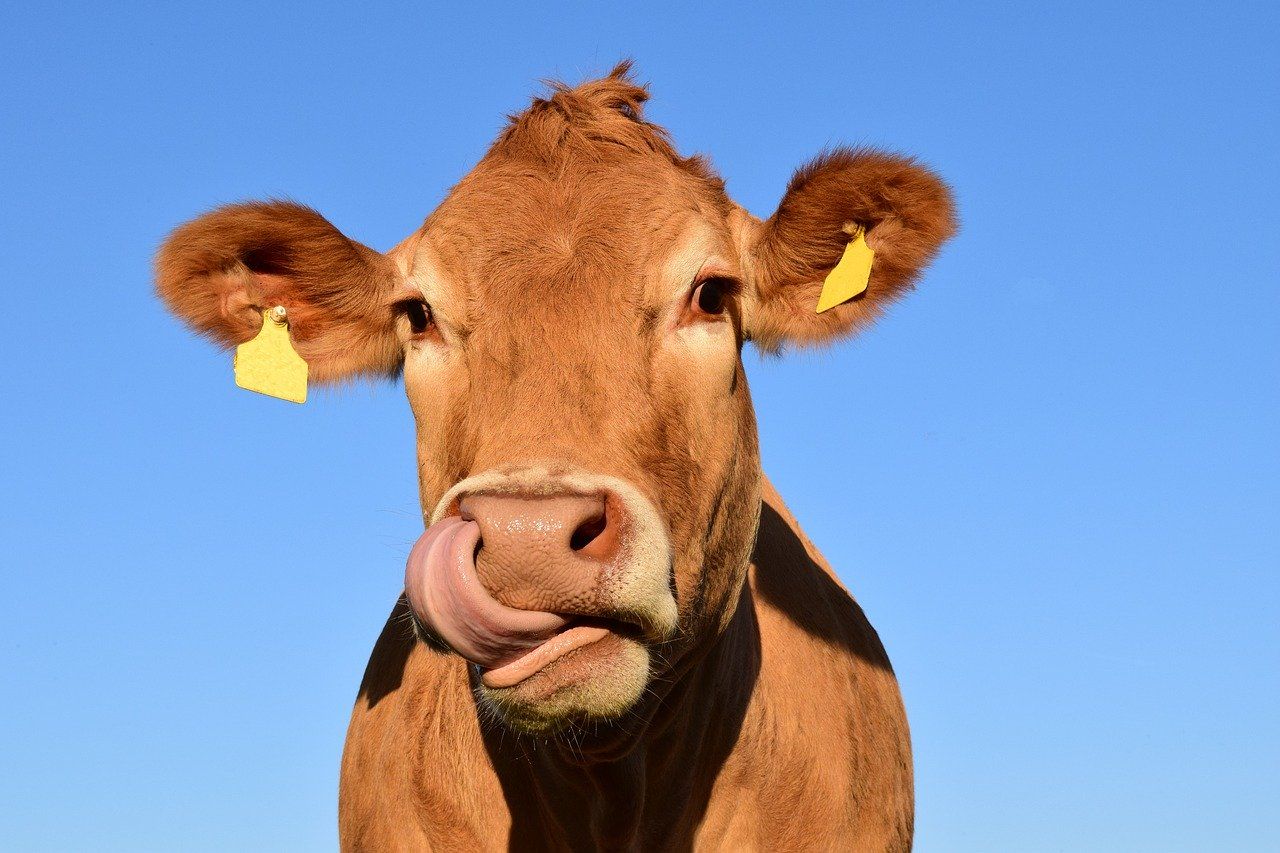If you’re short on space, it’s essential that you know how to raise beef cattle on a few acres. Believe it or not, you don’t need thousands of acres of lush pasture in order to raise enough beef for yourself and your family. You just need to follow these tips.
What You'll Learn Today
How Many Acres Does it Take to Raise a Beef Cow?

Raising beef cattle can be rewarding in so many ways. Whether you plan to raise beef cows to support your family’s T-bone steak habit or to sell to a larger market, you might assume that you need hundreds of acres to do so effectively.
However, that’s not the case. It’s possible to raise a beef cow on limited acreage – as long as you go about it the right way.
The general estimate from the Natural Resources Conservation Service of the USDA is that it takes one and a half to two acres to provide enough food for a cow-calf pair for one year (twelve months).
That said, you’ll want to consider the following variables to determine how much space you need for your cows:
- The length of the grazing season in days
- The average weight of your animals (a cow-calf pair will need less space than two cows, for instance)
- The pasture type and yield (or growth rate – grass doesn’t grow in equal amounts the entire year)
- Whether you will be rotating pastures (recommended) or allowing animals to continuously graze
- The breed of cows you are raising along with their feed conversion ratios
Can You Raise a Cow on 1 Acre?

The average cow needs about 4% of its weight in forage per day. That is regardless of age or breed, for the most part. Once you know how much forage your animal needs, you can figure out how much pasture is necessary.
Generally speaking, raising a single cow on one acre is possible. It wouldn’t be wise to add much more than that, though, as you will be pressing the limitations of what your pasture can do.
Of course, there are a lot of factors that go into figuring out whether an acre is enough. How well does the grass grow? Will your cow be penned in a barn for part of the year (the winter) or on pasture the entire time?
Remember, it’s not just pasture space that you’ll need to account for in your calculations, but also barn space.
For the vast majority of farmers, a barn will be necessary to house and feed their cows in the winter, since grass won’t grow beneath a snow cover and supplemental hay will be necessary.
If you only have an acre of space on which to raise your cows, you will likely not be farming your own hay. Because of this, you’ll need to plan for buying hay in your budget, too.
Of course, there are ways to raise cattle on limited acreage without buying hay from someone else. This video has some excellent tips on how to do so.
How Many Cows Can You Put on 3 Acres?
Determining how many cows you can put on three acres will depend largely on your pasture management and production goals.
If it’s good pasture, you can estimate one head per acre – but if it’s marginal, it will be less than that.
In almost all cases, you will also need to provide some supplemental feed in the form of bales of hay in the winter or perhaps some grain.
You can of course stock at a higher density than that – but it won’t be to the benefit of your fields.
These will quickly turn to mud and you’ll likely have more parasite problems and other issues related to overcrowding to deal with, too.
Deciding How Many Cows to Raise: Tips to Consider

1. Cattle Per Acre Calculator
If you aren’t quite sure how many cattle you can raise on the property you already have available, the good news is that there are some cattle per acre calculators you can use to give you a rough estimate.
A word of caution, though – many of these do not factor in pasture type or climate. You might have a harder time pinpointing how many cows you can raise with that in mind.
2. How Long Does it Take to Raise a Cow for Slaughter?
You’ll also want to consider how long you will be grazing your cows on the few acres you have available.
It takes over a year, about 367 days, to grow a 500 lb calf to the 1000 lbs (average) it will need to be for slaughter. The typical daily weight gain is a pound and a half per day.
However, if you are grazing beef cattle on forage that is of limited quality and/or quantity, it will likely take longer for them to get to slaughter weight.
3. Is Raising Beef Cattle Profitable?
It can be, when done correctly. Beef cattle are often considered the easiest livestock to raise for profit since they don’t require quite as much daily maintenance as livestock like sheep and goats.
Plus, they reach heavy weights quickly, meaning it’s easier to turn a larger profit on a single animal.
4. Pasture Type
Take into consideration your pasture type along with your climate and water availability. If you live in an area with mild summers and plenty of rain, you likely will have pastures that are filled with more lush, green growth – translated, food for your cows.
Because of this, you can probably maintain higher stocking densities than if you live in the deserts of Arizona, where feed will be more limited.
5. Breed and Condition
To save yourself some time and money, put some effort into researching cattle breeds so that you can find animals that will perform best on the land you have available.
If you’re tight on space, choose animals that are docile and easy to handle as well as those that gain weight quickly.
This will not only reduce the amount of time spent tending to your livestock but will also limit the likelihood of animals breaking free from fences – a consideration if you have neighbors close by.
Plus, if you’re raising cattle in a limited space, you’re probably going to be spending much more time interacting with them than if they were out on rangeland – so docility is a must.
Breed adaptability to the climate is important, too. For instance, Brahmas don’t do as well in cold climates but perform quite well in warm ones.
You should also invest in cattle that are lean and healthy. Fat cows won’t gain meat weight as efficiently, instead putting on lots of fat – and consequently, reducing the efficacy of the limited pasture you have available.
Raising Cattle on Limited Space

Of course, when raising beef cattle on just a few acres, you’ll need to take the same steps to care for them as you would if they were out on hundreds of acres of rangeland.
Shelter is essential so that your cows can get out of the weather. If they can’t, they’re going to spend more energy trying to stay cool or warm than they are putting on weight.
You will also want to make sure your property is adequately fenced. Cattle don’t need a lot in the way of fencing but since you’ll likely be closer to other property lines, you need to keep in mind that you will be held liable for any damage your cattle cause.
A solid diet and feeding regimen are essential when it comes to keeping cattle healthy regardless of how much space you give them but especially on limited space. Don’t overcrowd your cattle regardless of the temptation.
Give them as much space as you can, even if that means raising fewer animals than you’d ideally like to.
Add a vitamin and mineral supplement to your feed if you’re worried that the pasture won’t be able to handle their needs as well as it should.
With these tips in mind, you can start planning out your beef cattle enterprise. It’s a great possibility even for farmers with limited acreage!
Frequently Asked Questions

Refer to the Federation of Animal Science Societies (FASS)Guide for the Care and Use of Agricultural Animals in Research and Teaching. This publication is commonly referred to as the “Ag Guide”. Although this publication is geared toward research and teaching enterprises, the information it contains can easily be applied to agricultural projects. Also, refer to a handy summary table of this information prepared by Penn State Extension.
Bunk space is the area or apron surrounding a cattle feeder. This is where young cattle will congregate and stand side-by-side to eat. It is important to provide generous bunk space because if cattle must compete aggressively to eat, they will experience anxiety and burn calories. This adds up to low weight gains.
Cattle who are bunk broke know how to eat from a feed bunk (rather than from the ground, from a feed pan or simply by grazing). Eating effectively from a feed bunk is a learned skill. Cattle who are bunk broke will be more efficient feeders and will gain more weight.
Use a Cattle per Acre Calculator to input the specifics of your resources and your plan.
Things to keep in mind include the condition of your pasture and your grazing strategy. Variables such as the weather and the type and amount of forage you plan to provide also play an important part in determining the number of cattle you can successfully keep.
To be honest, a few acres are not enough. These animals need a lot more space, ideally a big grass field, to grow.